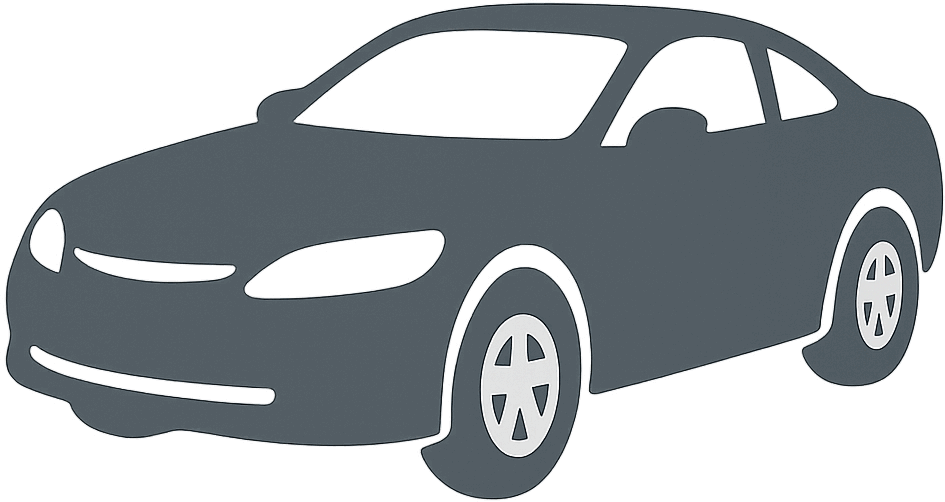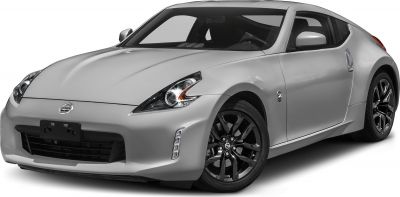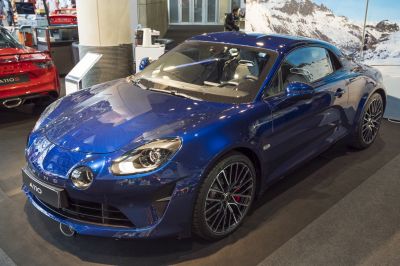 1992 Puma AMV Dimensions, Size & Specs
1992 Puma AMV Dimensions, Size & Specs
Measurements of the 1992 Puma AMV, engineered for optimal performance and comfort
| Dimensions | |
|---|---|
| Length: | 4290 mm168.9 in14.1 ft |
| Width: | 1840 mm72.4 in6.0 ft |
| Height: | 1285 mm50.6 in4.2 ft |
| Weight Specifications | |
| Curb Weight: | 980 kg2161 lbs |
| Maximal permitted Weight: | 1260 kg2778 lbs |
| Tire Specifications | |
| Rims Size: |
|
| Tire Size: |
|
The Puma AMV, produced from 1992 to 1995, is a compact and sporty coupe that combines a sleek design with practical dimensions. Measuring 4290 mm (168.9 inches) in length, 1840 mm (72.4 inches) in width, and standing at 1285 mm (50.6 inches) tall, this vehicle boasts a low, aerodynamic profile that emphasizes its sporty nature. Weighing in at a curb weight of 980 kg (2,160 lbs), it maintains a lightweight stance, contributing to agile handling and fuel efficiency. The Puma AMV can carry a maximum weight up to 1260 kg (2,778 lbs), balancing lightness with practicality. It rides on modest 14-inch rims fitted with 225/60 R14 tires, providing a blend of comfort and grip suitable for varied driving conditions. As a coupe, the AMV offers a stylish two-door configuration aimed at drivers valuing both aesthetics and driving dynamics. Overall, the Puma AMV’s dimensions and weight make it a distinctive and manageable car from the early 1990s, appealing to enthusiasts who appreciate classic sporty coupes with balanced proportions and performance-oriented specs.
Discover the standout features that make the 1992 Puma AMV a leader in its class
Have a question? Please check our knowledgebase first.
The Puma AMV coupe from 1992 to 1995 measures 4290 mm (approximately 168.9 inches) in length, 1840 mm (about 72.4 inches) in width, and stands at a height of 1285 mm (roughly 50.6 inches). These dimensions make it a compact and sleek coupe with sporty proportions, suitable for enthusiasts looking for a distinctive and agile vehicle.
The Puma AMV from 1992-1995 has a curb weight of 980 kg (around 2160 lbs), indicating the car's weight without passengers or cargo. Its maximum weight capacity, including passengers and cargo, is 1260 kg (approximately 2778 lbs). This relatively low weight contributes to the car's nimble handling characteristics and efficient performance.
The Puma AMV is equipped with 14-inch rims fitted with tires sized at 225/60 R14. This tire size helps provide a good balance between ride comfort, traction, and handling, making the AMV well-suited to sporty driving styles while maintaining everyday usability.
Standard residential garages typically measure about 2.4 meters (approximately 8 feet) wide by 4.8 meters (around 16 feet) deep. Given the Puma AMV dimensions—4290 mm (4.29 meters / 14.1 feet) in length and 1840 mm (1.84 meters / 6 feet) in width—the vehicle comfortably fits within a standard garage in terms of length and width. Its low height of 1285 mm (1.285 meters / 4.2 feet) also ensures ample vertical clearance. Therefore, parking the Puma AMV in a typical residential garage should be easy without tight squeezing.
The Puma AMV introduced in 1992 is significantly distinct in size compared to Puma's earlier models from the 1970s and 1980s, which were typically smaller and lighter sports cars. The AMV's length of 4290 mm (168.9 inches) and width of 1840 mm (72.4 inches) are larger than many predecessors that tended to have lengths around 3.5 to 4 meters. This growth in size allowed the AMV to accommodate more modern amenities and a more spacious cabin, while still maintaining a light curb weight of 980 kg (2160 lbs), bridging traditional Puma agility with more contemporary dimensions.
In comparison to similar early 1990s coupes like the Mazda MX-5 first generation and Toyota MR2 AW11, the Puma AMV is longer and wider. For example, the first-gen MX-5 measures roughly 3915 mm (154 inches) in length and 1675 mm (66 inches) in width, making the Puma noticeably larger at 4290 mm long and 1840 mm wide. This larger footprint provides the Puma AMV with a more substantial road presence and potentially more interior space, though it still maintains a sporty low height of 1285 mm (50.6 inches).
With external dimensions of 4290 mm length and 1840 mm width, the Puma AMV offers more generous interior space than many smaller sports cars of its era. While the car retains a sleek coupe profile with a low height (1285 mm), its width supports a comfortable cabin for two passengers. The coupe design and low height can limit headroom slightly, but overall, the cabin space is balanced for a sporty vehicle, allowing reasonable legroom and shoulder room without sacrificing aerodynamic styling.
Yes, the relatively low curb weight of 980 kg (2160 lbs) for the Puma AMV is a major advantage when it comes to handling and performance. A lighter weight helps the car accelerate more quickly, brake more effectively, and corner with greater agility. This weight also improves fuel efficiency and can reduce wear on tires and brakes. Combined with the AMV's dimensions, this lightweight design makes for a nimble and responsive coupe tailored to sporty driving dynamics.
The Puma AMV's use of 14-inch rims paired with 225/60 R14 tires offers a blend of sporty grip and ride comfort. The wider 225 mm tire width provides increased traction and stability during cornering and acceleration compared to narrower tires. The 60 series aspect ratio helps absorb road imperfections, maintaining ride quality. This combo supports the AMV's lightweight construction by enhancing handling precision and road feedback, which is key for a coupe with sporting aspirations.
The Puma AMV, with its moderate length of 4290 mm (14.1 ft) and relatively low height (1285 mm/4.2 ft), strikes a good balance between sporty design and everyday usability. Its width of 1840 mm (6 ft) does not overly challenge typical urban parking spaces. A curb weight of 980 kg (2160 lbs) aids fuel economy and maneuverability. These characteristics allow it to be practical for daily commuting while offering a distinctive coupe experience. However, like many sports coupes, rear seat space is limited or absent, so it is best suited for singles or couples.
Discover similar sized cars.

| Production: | 2017-2020 |
|---|---|
| Model Year: | 2018 |
| Length: | 4255-4331 mm167.5-170.5 in |
| Width: | 1845-1870 mm72.6-73.6 in |
| Height: | 1316 mm51.8 in |

| Production: | 2017-present |
|---|---|
| Model Year: | 2018 |
| Length: | 4180-4256 mm164.6-167.6 in |
| Width: | 1980 mm78.0 in |
| Height: | 1238-1252 mm48.7-49.3 in |
